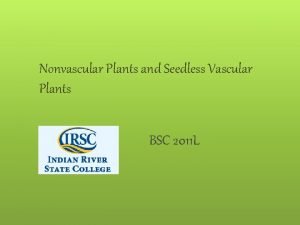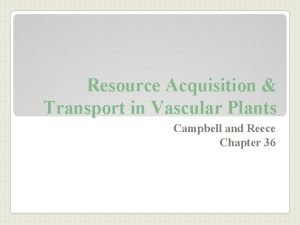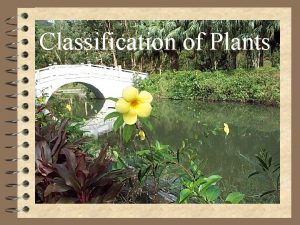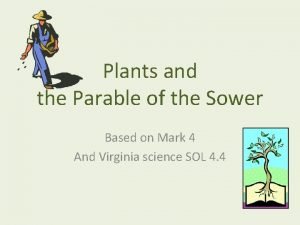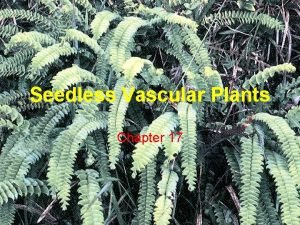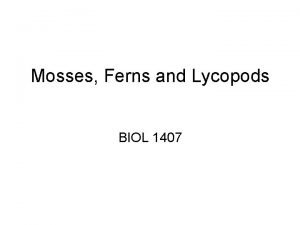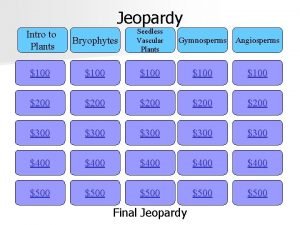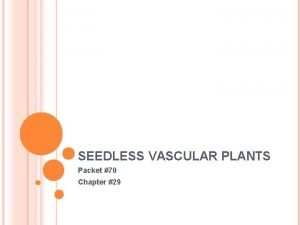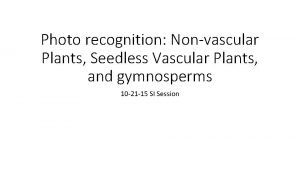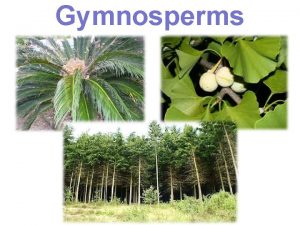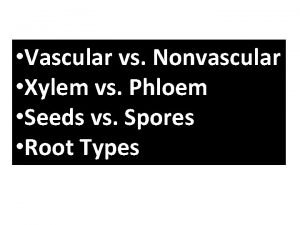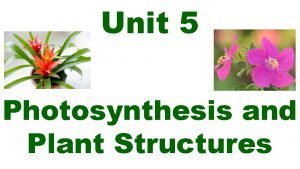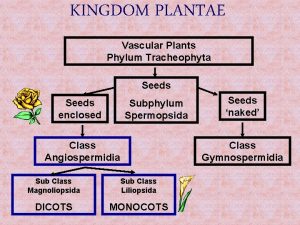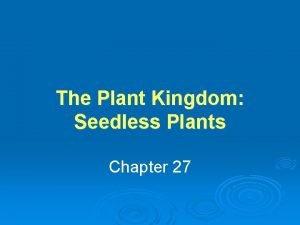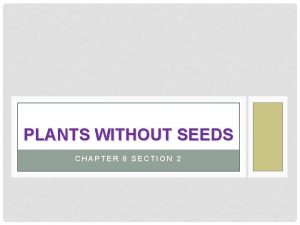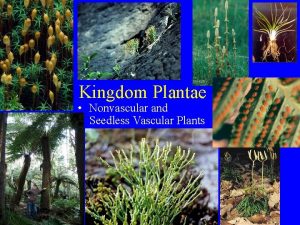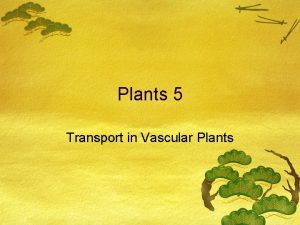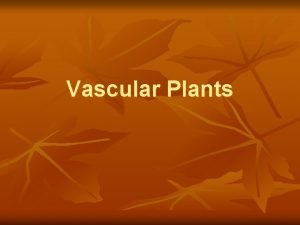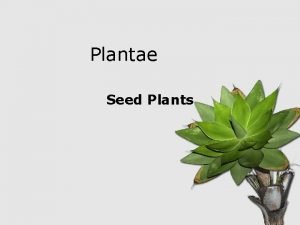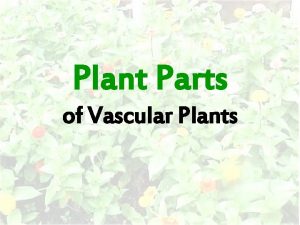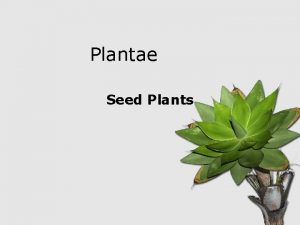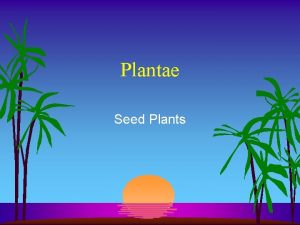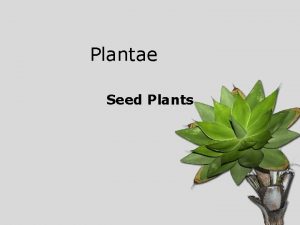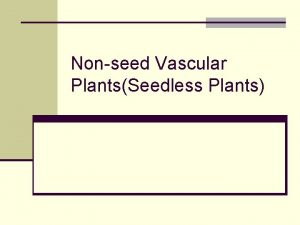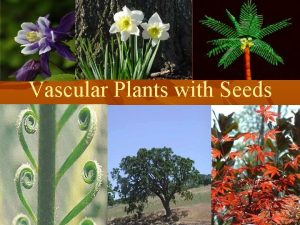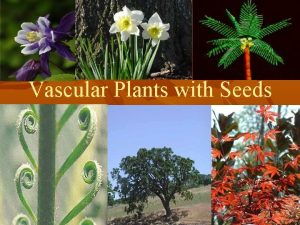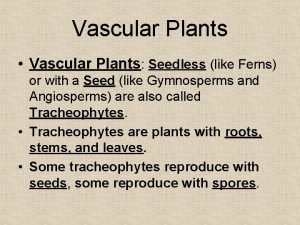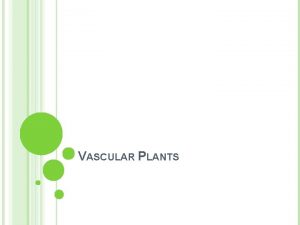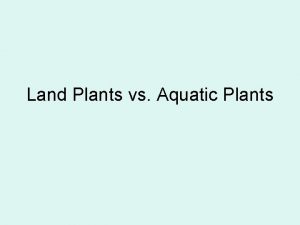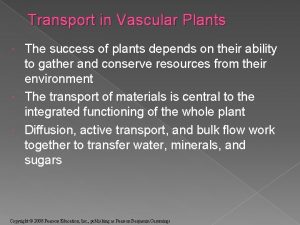Transport in Vascular Plants Why does transport need





















- Slides: 21

Transport in Vascular Plants

Why does transport need to occur? ¢ Materials need to be transported between the root system and the shoot system

Transport Within Plants ¢ ¢ Water and minerals absorbed by roots are drawn upward in the xylem to the shoots Sugar produced by photosynthesis is exported from leaves to other organs via the phloem

Passive & Active Transport ¢ Passive Transport l Does NOT require ATP to occur • Diffusion • Osmosis • Facilitated Diffusion ¢ Active Transport l Requires ATP to occur • Bulk transport (endo/exocytosis)

Water Potential ¢ Water potential is a measure of where water wants to go in a plant, based on 2 factors: l l ¢ Solute concentration (where there is more salt, etc. ) Pressure (due to cell wall) Water potential determines the direction of movement of water l Free water moves from regions of higher water potential to regions of lower water potential

Water Potential ¢ Water potential is determined using the following equation: l ¢ ΨS is solute potential (osmotic potential) l l l ¢ Ψ = ΨS + ΨP ΨS of pure water is 0 When solutes are added to pure water, the number of free water molecules is reduced as solute molecules bind to some water molecules Therefore, ΨS of any solution is always negative ΨP is pressure potential l l ΨP is the physical pressure on a solution Turgor pressure in plants is produced when cell contents press the cell membrane against the cell wall

Turgor Pressure ¢ ¢ Turgor pressure results from the swelling of a plant cell against its cell wall A plant that is not turgid is said to be flaccid

Short- and Long-Distance Transport in Plants ¢ Water and sugars move differently in plants, depending on whether they’re going a short or a long distance l Ie. – walking down the street or taking an airplane across the world

Short-Distance Transport 1. Simple diffusion/osmosis l substances in one cell move out of one cell, across the cell wall, and into another cell 2. Plasmodesmata l l l Plasmodesmata are connections between the cytoplasm of adjacent plant cells Substances move between cells through these openings This connection of the cytoplasm is called the symplast 3. Apoplast l l The extracellular pathway of cell walls Substances move between cells through the cell walls, which are connected

Long-Distance Transport Over long distances, these 3 processes (simple diffusion, apoplast, & symplast) take too long ¢ Water and solutes move through xylem and phloem by bulk flow, the movement of a fluid driven by pressure ¢

Transpiration ¢ ¢ Transpiration is the evaporation of water from leaves and other parts of the plant An average maple tree loses more than 200 L of water per hour during the summer! Unless this water is replaced by water absorbed by the roots, leaves will wilt and die Xylem transports the water throughout the plant l PUSHING and PULLING

PUSHING Xylem Sap ¢ ¢ ¢ Water is still “collected” by the roots at night, when transpiration is not occurring as much As water flows in, pressure is generated which forces the fluid to go up the xylem This upward push of xylem sap is called root pressure Can cause guttation (exuding water from margins of the leaf, not through stomata). This, however, can only move xylem sap a few meters at most l Straw analogy

Xylem Cells: 2 types of water-conducting cells ¢ ¢ Vessel elements- wide, thin walled, hollow cells; dead at maturity (sclerenchyma tissue). Transport & support Tracheids= narrower, tapered cells; have pits at ends that allow water transport.

PULLING Xylem Sap (Cohesion-Tension Theory) ¢ Transpiration draws water out of the xylem (tension) l ¢ ¢ The outside air water potential (Ψ) is lower than that inside the plant, therefore drawing water out of the plant Water’s unique property of adhesion (water sticking to other surfaces) forces the water to come up the xylem to replace the lost water This can occur only through an unbroken chain of water molecules l Cohesion • water sticking together


The Photosynthesis. Transpiration Compromise ¢ ¢ In order to perform photosynthesis, plants must spread their leaves to the sun and obtain CO 2 from the air Carbon dioxide enters the plant and oxygen leaves the plant via stomata The opening of stomata, however, allows water to escape from the plant (transpiration) A plant must “judge” how much carbon dioxide it needs and how much water it can afford to lose

Mechanism for Stomatal Opening & Closing ¢ ¢ K+ is pumped into guard cells by active transport. Solute potential becomes negative. Water moves from the higher water potential to lower potential entering the guard cells. Turgor pressure cause cells to bow out & creates open stoma.

Stimuli that Causes Stomatal Opening ¢ Typically open at dawn due to 3 stimuli: l l l o Blue light receptors signal transport proteins to pump in K+. Depletion of carbon dioxide due to increased photosynthesis causes stomatal opening. Circadian rhythms-internal 24 hour clock. Environmental stress (heat/drought) causes stomatal closing during the day. Absciscic acid is a hormone produced in the roots to cause this response.

Phloem – Sugar Transport ¢ Phloem carries phloem sap (food) from a sugar source to a sugar sink l Sugar source: • an organ where sugar is being produced • Usually leaves l Sugar sink: • an organ that consumes or stores sugar • Usually roots, growing stems, buds, and fruits

Phloem cells ¢ ¢ Sieve-tube elements- alive at maturity; long narrow with sieve plates at ends; no nucleus, ribosomes, vacuole. Companion cell- attached to side of sieve-tube element; organelles serve both cells; does NOT transport.

Pressure Flow: Mechanism of Translocation in Phloem ¢ ¢ ¢ Pressure is created at source as sugar is produce. Pressure decreases in sink as sugar is used. Water diffuses into phloem from xylem due to decrease water potential & PUSHES the sugar from source to sink. This is known as TRANSLOCATION.
 Non vascular vs vascular plants
Non vascular vs vascular plants Anthiridium
Anthiridium Nonvascular plant
Nonvascular plant Phylloxy
Phylloxy Why are seedless plants important
Why are seedless plants important Vascular and non vascular difference
Vascular and non vascular difference Plants
Plants Andreas carlsson bye bye bye
Andreas carlsson bye bye bye Vascular
Vascular Vascular vs nonvascular plants
Vascular vs nonvascular plants A popular seedless vascular plant is _____.
A popular seedless vascular plant is _____. Seedless vascular plants
Seedless vascular plants Homosporous
Homosporous Lychophyta
Lychophyta Gymnosperm life cycle
Gymnosperm life cycle Spore vs seed
Spore vs seed Structure of vascular plants
Structure of vascular plants Spermopsida plants
Spermopsida plants Selaginella life cycle
Selaginella life cycle Vascular and nonvascular plants
Vascular and nonvascular plants Pterophyta dominant generation
Pterophyta dominant generation Who is salerio in the merchant of venice
Who is salerio in the merchant of venice

